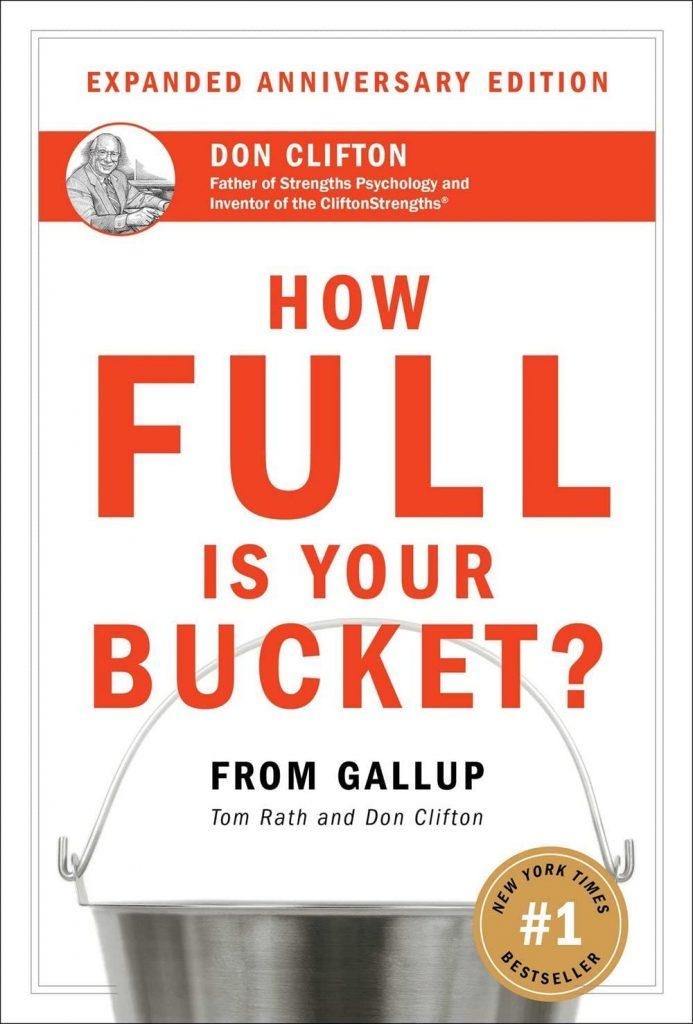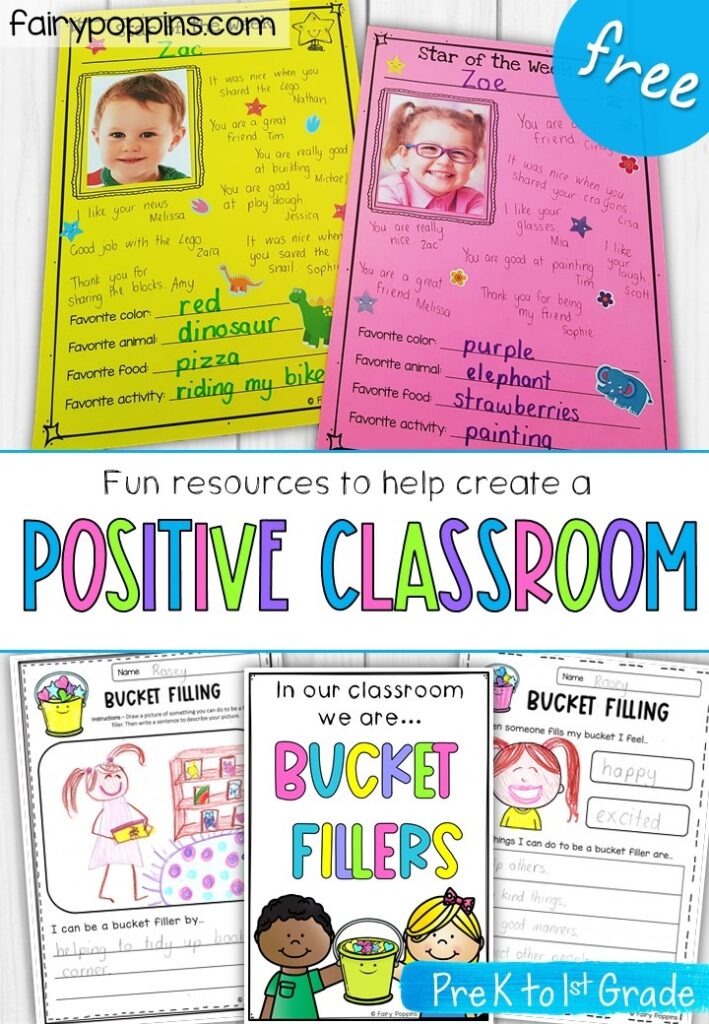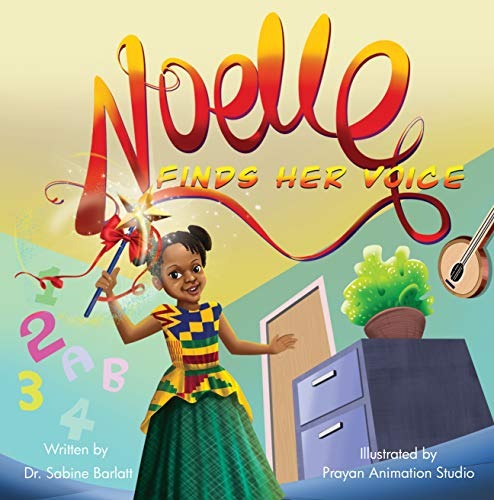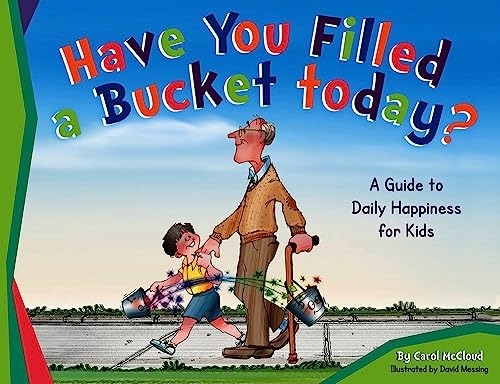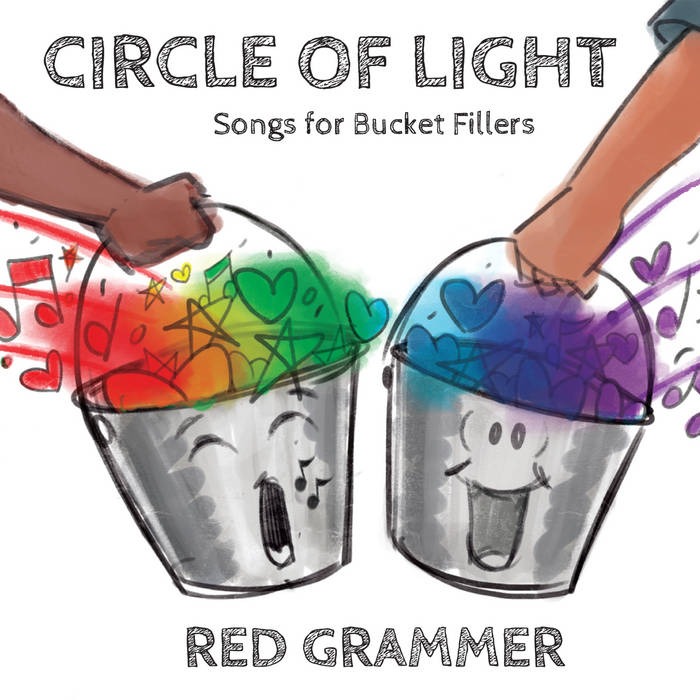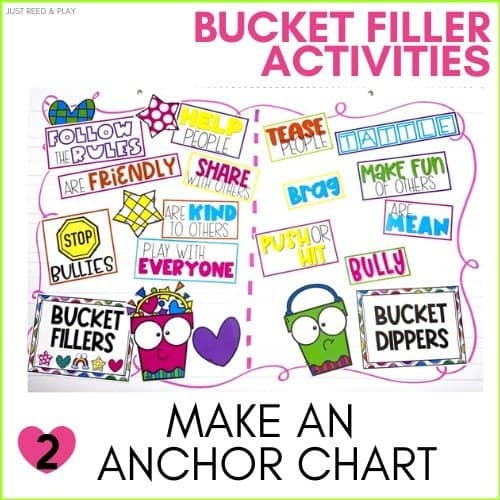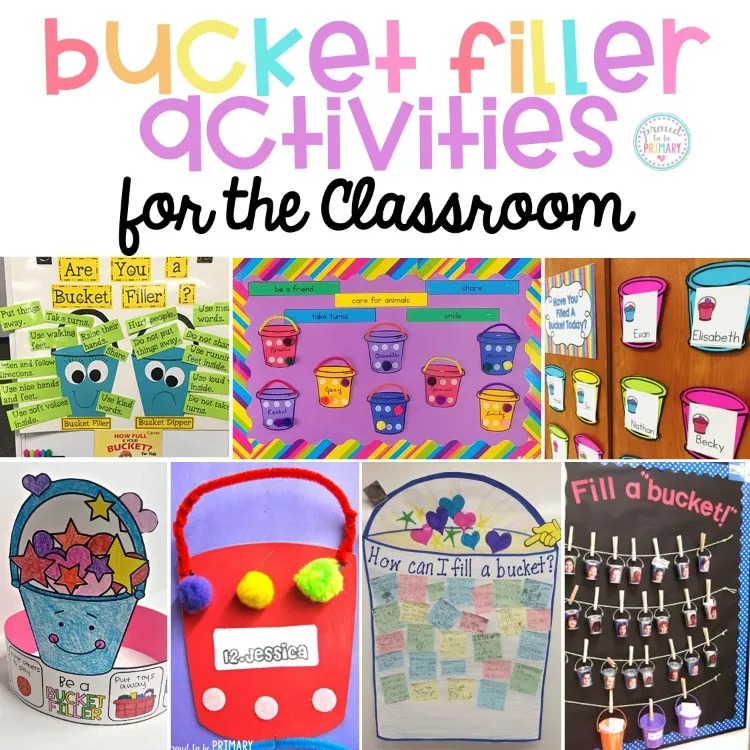In the classic movie, Bambi, Thumper advises his friend to say nothing if he can’t find anything nice to say. Wiser words were never spoken, especially when it comes to building self-esteem. Being kind is the essence of bucket filling.
In this post, you will learn what bucket filling is, and how to teach your students to be bucket fillers, not bucket drainers.

Table of Contents
- What Is Bucket-Filling?
- Why Is Bucket Filling Important?
- How To Fill A Bucket
- How to avoid draining a bucket
- Bucket Filler Ideas
- Understanding positive behavior
- Helping anyone who is facing difficulties
- Treating others with respect
- Praising someone for an achievement
- Activities
- Classroom Ideas
- Bucket Fillers In The Classroom FAQs
- Final thoughts on Bucket Filling
What Is Bucket-Filling?
Bucket filling refers to the idea of developing supportive and positive behavior. It is an image that’s used to help children understand the idea of building up others by being kind and behaving well.
The image comes from a book entitled How Full is your Bucket? by Tim Rath and Don Clifton.
Rath and Clifton use the image of everyone carrying around a bucket, that should be filled by behaving positively towards others.
We also want our buckets to be filled. By behaving positively towards others, we can begin to do this. However, our buckets really become full when others treat us kindly. They are more likely to do this if we show positive behavior towards them.
We should avoid taking from another’s bucket by behaving negatively towards them. This includes complaining, showing a bad attitude or even shouting at someone.
Why Is Bucket Filling Important?
It’s very important to teach children to become aware of how they relate to people. It’s also important for children to be aware of their own feelings. Bucket filling is the best way to do this.
The focus of bucket filing is on guiding students to think about being kind and supportive to others. This is a valuable life skill to learn.
The idea of bucket filling is important because it is a clear image that we can relate to. More than anything, bucket filling helps us develop a positive outlook on life.
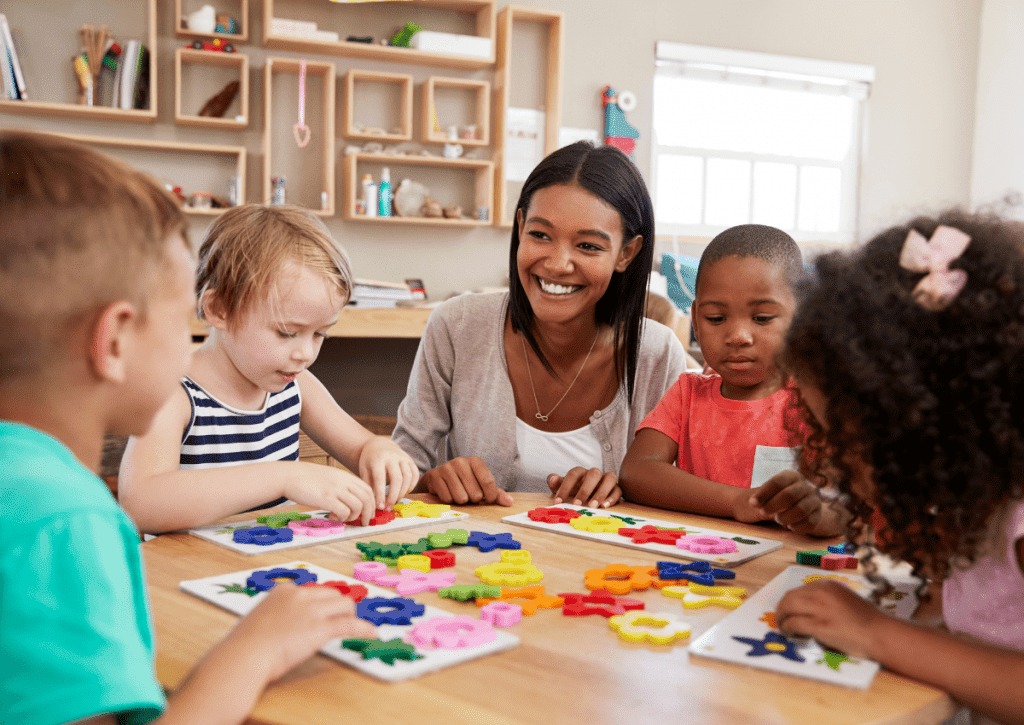
How To Fill A Bucket
Teach your students that they can fill a bucket by behaving positively:
- Treat others with respect. Listen to them and don’t judge them.
- Be courteous and kind to others.
- Don’t complain about anyone. If you can’t say something positive, then don’t say anything.
- Show compassion and understanding towards those who are hurting.
- Praise someone for an achievement, and encourage them if they don’t quite get it.
How to avoid draining a bucket
Encourage your students to avoid negative behavior that drains buckets:
- Acting disrespectfully towards someone.
- Making fun of what someone looks or sounds like, or what they do.
- Annoying and harassing a person who is not doing what you want them to do.
- Being inconsiderate towards others.
- Being rude and refusing to help someone when they need assistance.
Bucket Filler Ideas
There are some great resources you can use to teach your students to be a bucket filler.
Understanding positive behavior
The key to understanding how to be a bucket filler is to know what it means to behave positively. This resource includes printable sheets that individual students can fill in. The focus is on what it means to use positive behavior to fill people’s buckets.
Fun Resources to help create a Positive Classroom from Fairy Poppins.
Helping anyone who is facing difficulties
A great approach to understanding about supporting people is to use a book that the students can relate to.
Noelle Finds her Voice By Sabine barlatt
By Sabine Barlatt tells the story of Noelle, who struggles with speech delays. Read the book with the class. Then discuss what a person could do, or how they could behave towards Noelle to help to fill her bucket.
Treating others with respect
This video lesson Being Respectful Towards Others by Educational Voice, presents the ideas of how we can show respect to others. You can guide students to talk about how they can implement this in their own lives.
Praising someone for an achievement
You can challenge your students to go home and find two things that people do that should be praised. And to praise them. The actions can be as simple as thanking Mum for supper, or praising their little brother for learning to say a word.
In class, the students must explain what they did and how it made them feel. You can explain that they helped to fill other people’s buckets, and their own.
Activities
Using books
Have You Filled A Bucket Today By Carol McCloud
Reading is an essential part of education. This resource is a PDF of ‘Have you filled a bucket today? by Carol McCloud. Read the book to the class and discuss what it means to be a bucket filler.
Using CDs and videos
Circle Of Light CD From Red Grammer
(Bucket Filler Resources for Teaching Kids) from Moments a Day is a CD of songs that focus on elements of building character. ‘See me Beautiful’ is particularly useful as a way to begin talking about how the students feel when their bucket is full.
Classroom Ideas
Lessons
When you structure a lesson around bucket fillers, bear in mind that students learn by doing. That said, there are times when it’s good to take a source and use it to explain basic concepts to the readers.
This lesson plan (from Back to School) uses a book about bucket filling to involve the students in a discussion and activities that teach the concepts around bucket filling.
Anchor Charts
Bucket Filler Activities: Make An Anchor Chart From Just Reed & Play
This resource is the template to begin an anchor chart about bucket fillers. There are two columns that you can fill up with descriptions of activities or actions, that are either bucket fillers or bucket dippers.
Bulletin board
Be creative with the way you use a bulletin board to represent bucket filling. The lower grades can bring a picture from home of something they did to fill someone’s bucket. Pin these on the board. Older grades can write down a short description of something they did.
You can also encourage students to cut articles or pictures out of magazines and newspapers that show someone being a bucket filler. These can be displayed on the bulletin board.
Writing and drawing
Bucket Filler Class Booklet by Kindergarten Cafe
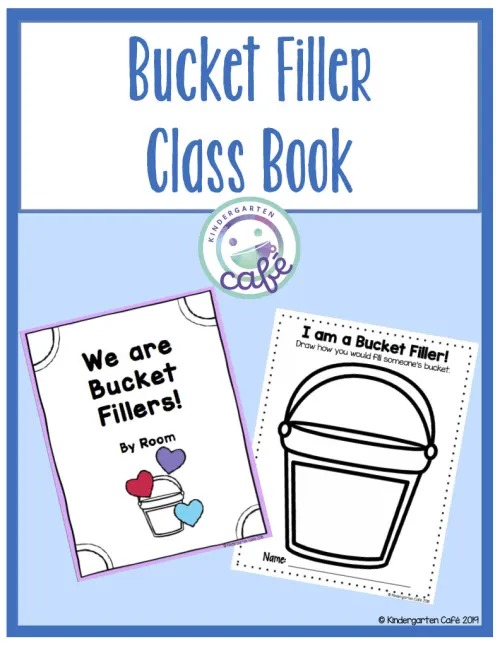
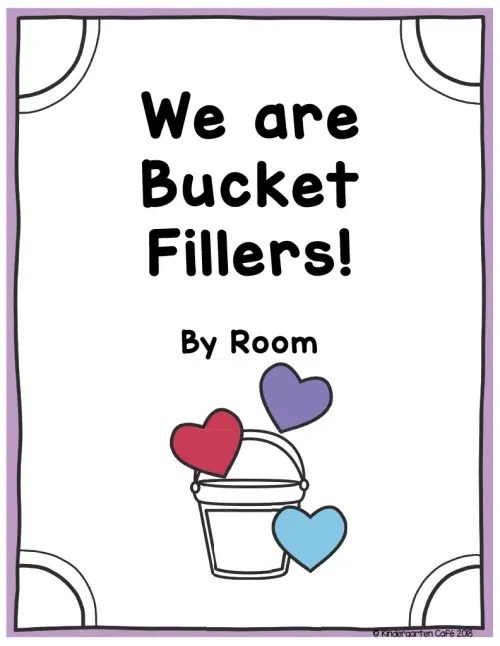
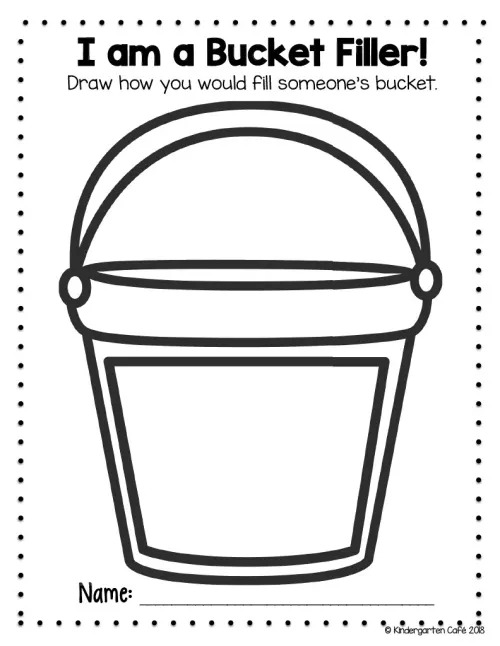
This resource allows you to guide your students to create a booklet in class that will help the students identify different actions and attitudes that are bucket fillers. They can draw, or write about, something they have done to become one.
Bucket Filler Printables from Proud To Be Primary
This resource allows you to print sheets of activities that help your students learn about how to be a bucket filler. They will learn the difference between filling and emptying a bucket, and how to know when their buckets are full.
Making it concrete
Children learn best from doing. If the ‘doing’ is relatively abstract, like bucket filling is, then work to make it concrete. This can help the students visualize what they are expected to do more easily.
Visualizing with a bucket
Ask each learner to bring a plastic bucket to school. It can be quite small for the purposes of the exercise.
Encourage the students to look at another’s bucket. How can they fill it? What should they do to do so?
They must also look at their own bucket. How can they help others to fill it?

Making it more concrete
For older children, you can extend this activity. Give each student a bunch of things (small pieces of paper, candy etc). Every time they do something nice for someone, or behave positively, they should take one of the things from their bucket and put it in that person’s bucket.
If they do something negative, they must take a thing out of their bucket and throw it away.
This is not a competition, so don’t let the students even compare buckets. The aim is, of course, to have as full a bucket as possible.
Bucket Fillers In The Classroom FAQs
A bucket filler is someone who’s aware of behaving in a way that builds others up and encourages them. The other person’s bucket is filled and they will feel positive about the world. A bucket filler is conscious of showing respect towards others and not showing negative emotions or attitudes.
The key to bucket filling is respectful and encouraging behavior. These are essential skills and attitudes to learn in order to build relationships. Teaching your students to behave positively and to show support for others will create a constructive atmosphere in your classroom. It will also help them to develop as individuals.
Negative behavior and comments that can cause harm to another person will drain your bucket. Every time you show impatience or disrespect, or complain, or behave insincerely, you drain you own bucket. This behavior can also drain the other person’s bucket.
Final thoughts on Bucket Filling
Bucket filling is cultivating a positive outlook. It’s a valuable skill to learn, so that the students will create a respectful space in the classroom in which individuals are recognized and built up by their peers. Teaching students to be bucket fillers is a life skill from which they will only benefit.

